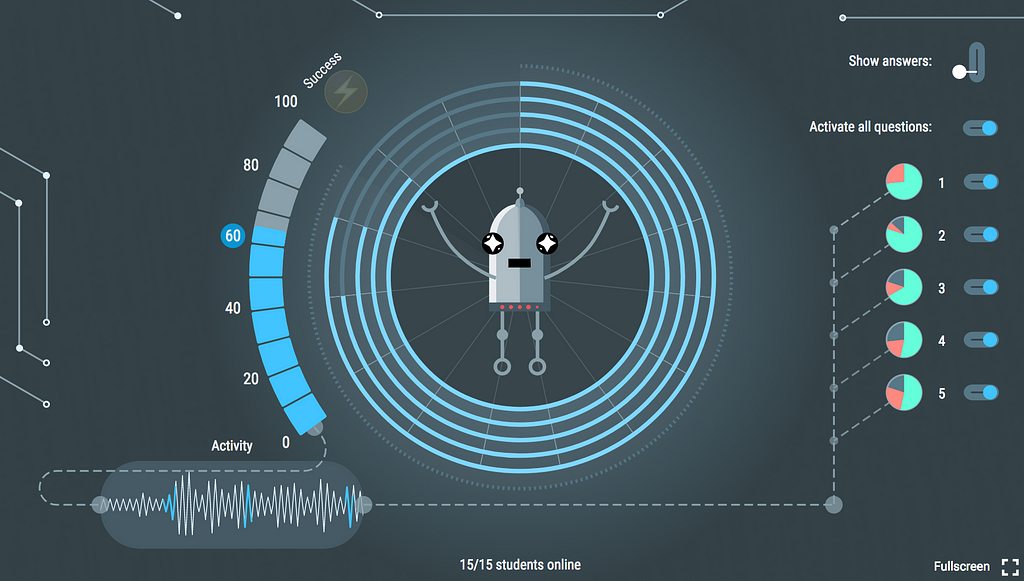Collaborative Challenges
Living in a world where Google seems to answer all of our questions without having to even think about it, it’s often hard for students to understand how the knowledge they’re learning in the classroom can be used to make a greater impact in the world around them. While innovative and creative teachers go to great distances to make the curriculum exciting and relevant for students, the gap between the curriculum and its relevance in the real world leaves many students feeling ill-prepared to use the skills they learn in school to tackle bigger problems. This issue of students feeling a lack of purpose has been a growing topic in education, as noted in articles from EdSurge and MindShift. Both articles mention William Damon’s research conducted at the Stanford Center of Adolescence, showing that “only about 20 percent of high school students report being purposeful.”
At Classtime, we envision today’s students working collaboratively and creatively towards solving bigger goals. Students should understand why the topics they’re learning in the classroom matter in the real world and how the skills they’re learning in the classroom give them the power to drive change through combining forces in a collaborative team. Excitingly, we are at a time when the tremendous scalability and cost-efficiency of internet technology have the ability to combine forces with teachers to strengthen the relevancy between the curriculum’s content and real-world challenges, motivating students to become engaged and active citizens of tomorrow.


In order to reach this vision, we’ve built Classtime as the teacher’s classroom companion. Teachers do not have the luxury of spending hours dedicated to each student to make sure they’re engaged and thoroughly understand the curriculum. This is our motivation for Collaborative Challenges — to multiply the teacher’s impact without multiplying their effort by engaging and motivating students and offering teachers immediate insights into students’ understanding of the lesson.
Here is how we plan to do so:
– Increase Student Engagement: When Collaborative Challenges are projected on the wall, students are motivated to engage in the learning process and must answer each question on their own devices. They’ll then receive immediate feedback on their answers and reinforcement of their engagement.
– Provide relevance and purpose: We created POLL-E the Robot as the first Collaborative Challenge where the teacher can create a narrative around their lesson and then the students will all answer questions in order to recharge POLL-E’s batteries and make him happy. We quickly learned from POLL-E’s potential that better narratives have the ability to engage and motivate students. That’s why we’ve developed more real-world challenges with increasing detail in the animations, and more connected question sets relating to each grade level: building the Tower Bridge in London, constructing a roller coaster, or resupplying the International Space Station. By doing so, students learn the ‘Why’ while also learning ‘How’ to do it and they will be able to retain more of the curriculum’s content and do so more sustainably.

– Foster collaboration: We’ve built Collaborative Challenges on the observation that in later, professional life, the greatest impact is generally achieved through combined forces. Thus, our overall goal is to promote network thinking and collaboration, not repetition. While each individual student must answer the questions on their own device, we aim to motivate the class to work together outside the digital realm in order to reach the shared success of the challenge.
– Create an increasing value for teachers: We are fully aware that we cannot just provide another tool that teachers must go through great efforts to learn. This is why Classtime is built around simplicity and flexibility. Our solution can be used in practically every age group, can be easily localized to any region, and can be implemented instantly once the classroom provides WiFi and devices for students. Teachers can create their own questions, choose from a wide range of pre-made questions, or even import questions from fellow colleagues or libraries. And every time a student answers a question, it is immediately validated without the teacher having to do any extra work. Finally, teachers are able to immediately gain valuable insights into the students’ understanding of the material, allowing them to see where improvement is needed.
Through the above approach, we’re aiming to build a powerful ecosystem that thrives on the contribution and usage of you as educators and teachers. You lead your students’ education and development, and Classtime provides the means to multiply your impact.
Classtime has already reached teachers and students from all over the world and has been providing them with a solution to assess all types of subjects, from language and art classes to mathematics and sciences. For example, Sanela Jukić, a math teacher from Croatia, tells us:
Today, I played the challenges with my 5th grade students and they were blown away. They said it was the best math class ever.


